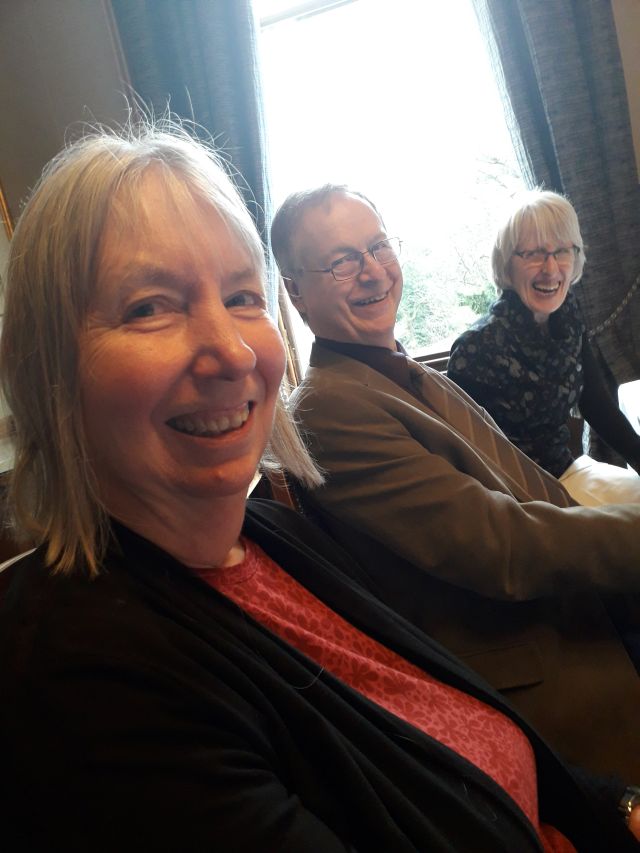TALK BY SUSAN KRUSE ON COMMUNITY ARCHAEOLOGY IN THE HIGHLANDS
LUNCH ON SATURDAY 1 FEBRUARY 2020

Community archaeology involves communities in the planning and carrying out of research projects that are of direct interest to them, and is not just about digging since other skills including aerial photography have their part to play. Unlike history which is derived from a static set of documents, archaeology is always changing as new finds come to light, and in the Highlands is supported by the the Highland Historic Environment Record and by Canmore, which is the online catalogue to Scotland’s archaeology, buildings, industrial and maritime heritage
Archaeology for Communities in the Highlands (ARCH) was set up in January 2009 to provide a range of exciting and innovative community archaeology projects. It creates opportunities to encourage people with diverse interests and abilities to learn about, record and participate in celebrating and increasing knowledge of their local heritage. Ways in which ARCH does this include classroom learning, practical outdoor sessions, group project work or via a virtual community. Susan in her role as Learning and Development Manager is employed by ARCH on many of the projects, including adult learning, youth work with Young Archaeologists' Clubs, archival work, excavation and survey, museum skills and community outreach.
The size of Belgium, the Highlands have over 1200 scheduled monuments, whose condition reflects the area’s history of fitful activity and depopulation. The earliest traces of human activity had now been found to date from Palaeolithic times around 12500 BC, before the last Ice Age, when Scotland’s first settlers have left us a legacy of their rubbish including discarded arrowheads since no bones or dwellings survive.
The Mesolithic Age featured hunters, gatherers and fishermen, whose lives in Easter Ross are being traced by the Tarradale Project. Advent of the Neolithic Age brought about the arrival of farming and pottery skills, with chambered cairns, timber houses and rock art. In the Bronze Age metal was worked and burials took place in cists, with a change in DNA to dark skin and hair which begs the question whether the Highlands had been invaded or were genes bred through migration into the population. With the coming of the Iron Age, an absence of burials suggested the impact of a new religion, and while there were increased indications of people meeting a violent death, dwelling types proliferated to include roundhouses, crannogs, brochs and hill forts whose vitrification may be for fortification or as a result of the site being destroyed.
In the early historic period from 300 AD onwards Christianity brought literacy to the Picts, with Portmahomack producing gospel books and Rogart yielding a dozen brooches. After 800 AD the Viking era saw a reversion to pagan burials and the concealment of bullion hordes. The medieval period was quite different from in the South of Scotland since the Western Isles remained Norse until 1200s, Orkney and Shetland until 1400s AD. In post-medieval times pacification of the Highlands required military presences like Fort George, but tower houses gave way to mansions and many abandoned townships remain in the landscape, waiting to be excavated.
Structures to be seen in the Highlands today include farms, public buildings, churches, mills and quarries, with industrial archaeology ranging from ancient trades such as distilling, kelp and forestry through to modern ones like aluminium, fish-farming and fabrication yards. Roadbuilding begun with the military was consolidated by Thomas Telford and by landowners, while rail made the eastern Highlands better connected in 1900 than now. Maritime transport gave us ferry ports, fishing harbours and lighthouses, and the legacy of aviation is RAF air bases as well as civilian airfields.
ARCH activities bring together different skills, providing sociable activity and exercise that is both mentally and physically stimulating, under the direction of a tutor whose role is to ensure that projects are delivered in a quality and responsible way. People of all ages can gather together to enjoy re-evaluating familiar landscapes in a refreshing manner that helps them understand their heritage. ARCH are currently working on a three-year project to develop a Highland Archaeology Research Framework whose starting-point of getting all data as full and accurate as possible has prompted a questionnaire to museums asking which objects in their collections they feel are important.
Further information can be obtained from Archaeology for Communities in the Highlands (ARCH) at The Goods Shed, The Old Station, Strathpeffer IV14 9DH tel : 077888 35466 email : info@archhighland.org.uk